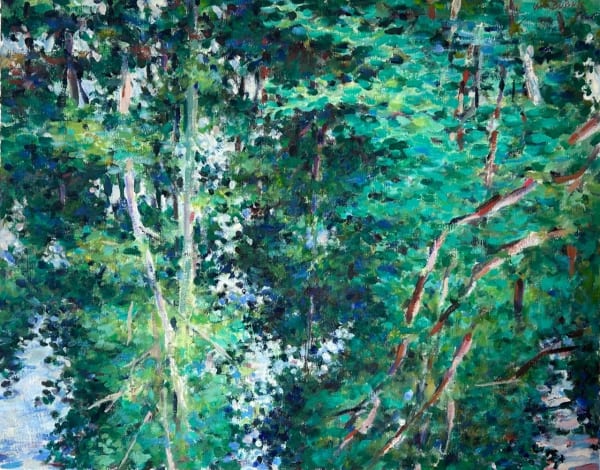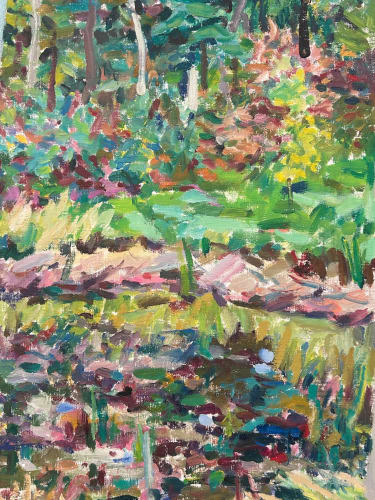Works
Biography
Charles DuBack first came to Maine from New York City in the mid-1950s. Coming to Maine in the mid-1950s provided a turning point in Charlie DuBack's artistic career. Like many New York artists, DuBack originally planned to spend a summer at the Skowhegan School of Painting and Sculpture but eventually established a life-long love of the Maine landscape. A devoted modernist inspired by the earlier paintings of Picasso and Matisse, DuBack was equally involved in the emerging color-field and Pop-Art movements of the day. It was these early works that first brought him critical acclaim in New York. His later watercolors translated his early love of color into a patchwork of bright brushwork that verge on abstraction. With a minimum of bravura brush strokes, DuBack deftly described a fir tree, sun glinting on the water, or the rising and the setting of the sun.
DuBack, who shared a New York studio with sculptor Bernard Langlais and painter Alex Katz in the 1950s, was part of a group of artists who all settled in mid-coast Maine as summer residents. Along with Lois Dodd and Yvonne Jacquette, their work is well represented in the Portland Museum of Art's collections.All of these artists were drawn initially to the landscape, but soon expanded their interests to the human figure and to the traditional culture and history of this place. Over the years, DuBack, who was an avid fly fisherman, developed an especially intimate knowledge of the Maine woods. With an artist's eye for defining color and shape, he translated that visual understanding into works of art that convey the vibrancy and animation of nature.
DuBack, who shared a New York studio with sculptor Bernard Langlais and painter Alex Katz in the 1950s, was part of a group of artists who all settled in mid-coast Maine as summer residents. Along with Lois Dodd and Yvonne Jacquette, their work is well represented in the Portland Museum of Art's collections.All of these artists were drawn initially to the landscape, but soon expanded their interests to the human figure and to the traditional culture and history of this place. Over the years, DuBack, who was an avid fly fisherman, developed an especially intimate knowledge of the Maine woods. With an artist's eye for defining color and shape, he translated that visual understanding into works of art that convey the vibrancy and animation of nature.
Enquire



